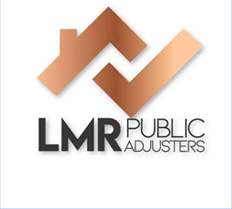Storms can wreak havoc on your property in a matter of minutes, leaving behind a trail of destruction that includes not only your home or commercial building but also your carefully maintained landscaping. While most property owners are quick to file claims for structural damage, many overlook the fact that landscaping—trees, shrubs, lawns, and decorative elements—can also be covered under certain insurance policies. Filing a claim for storm-damaged landscaping can be a complex process, but with the right knowledge and support, you can recover a significant portion of your losses.
At LMR Public Adjusters, South Florida’s premier public adjusters, we specialize in advocating for property owners to maximize insurance claims. Our personalized, dedicated team ensures that every detail is accounted for, especially when it comes to often-overlooked areas like landscaping. In this comprehensive guide, we’ll walk you through everything you need to know about filing a claim for storm-damaged landscaping—from understanding your policy to documenting the damage and negotiating with your insurance company.
Whether you’re a homeowner or a commercial property owner, this guide will equip you with the tools and insights needed to navigate the claims process effectively. Let’s dive in.
Understanding Insurance Coverage for Landscaping
Before you can file a claim for storm-damaged landscaping, it’s essential to understand what your insurance policy covers. Most standard homeowners and commercial property insurance policies include some level of coverage for landscaping, but the extent of that coverage can vary significantly. Typically, insurance will cover landscaping damage caused by specific perils such as windstorms, hail, lightning, fire, and vandalism. However, damage from floods or earthquakes may not be covered unless you have additional riders or separate policies.
Coverage limits for landscaping are usually a percentage of your dwelling coverage. For example, if your home is insured for $300,000, your landscaping coverage might be capped at 5% of that amount, or $15,000. Additionally, there may be sub-limits for individual items—such as $500 per tree or shrub. It’s also important to note that insurance generally does not cover damage due to poor maintenance or disease.
To get a clear understanding of your policy, review the declarations page and speak with your insurance agent. If you’re unsure about the specifics, a public adjuster can help interpret your policy and determine what is and isn’t covered. At LMR Public Adjusters, we offer free policy reviews to help you understand your rights and coverage options.
Understanding your policy is the first step in ensuring you receive the compensation you deserve. Knowing what’s covered—and what isn’t—will help you prepare a more accurate and compelling claim.
Documenting the Damage Thoroughly
Once the storm has passed and it’s safe to go outside, the next crucial step is to document the damage thoroughly. Proper documentation is the backbone of a successful insurance claim. Without it, your insurer may undervalue or even deny your claim.
Start by taking high-resolution photographs and videos of all affected areas. Capture wide-angle shots to show the overall extent of the damage and close-ups to highlight specific issues. Be sure to include timestamps if possible. If you have “before” photos of your landscaping, these can be incredibly helpful in demonstrating the extent of the damage.
Make a detailed inventory of all damaged landscaping elements. Include trees, shrubs, flower beds, sod, irrigation systems, retaining walls, decorative rocks, and any outdoor structures like pergolas or gazebos. Note the type, size, and estimated value of each item. If you have receipts or invoices from when the landscaping was installed, include those as well.
It’s also wise to get a professional assessment. A certified arborist or landscaper can provide an expert opinion on the extent of the damage and the cost of restoration or replacement. This third-party documentation can add credibility to your claim.
Finally, keep a log of all communications with your insurance company, including emails, phone calls, and in-person meetings. This record can be invaluable if disputes arise later in the process.
For more tips on documenting property damage, check out our blog where we share expert advice and real-life case studies.
Filing the Claim: Step-by-Step Process
Filing a claim for storm-damaged landscaping involves several steps, each of which must be executed carefully to ensure a favorable outcome. Here’s a step-by-step guide to help you through the process:
- Review Your Policy: As mentioned earlier, start by reviewing your insurance policy to understand what’s covered and the applicable limits.
- Notify Your Insurer: Contact your insurance company as soon as possible to report the damage. Most insurers have a time limit for filing claims, so don’t delay.
- Submit Documentation: Provide all the documentation you’ve gathered, including photos, videos, inventories, receipts, and professional assessments.
- Schedule an Inspection: Your insurer will likely send an adjuster to inspect the damage. Be present during this inspection to ensure all damage is noted.
- Get Repair Estimates: Obtain multiple estimates from licensed landscapers or contractors. These will help substantiate your claim and provide a benchmark for negotiations.
- Negotiate the Settlement: Don’t accept the first offer if it seems low. Be prepared to negotiate or bring in a public adjuster to advocate on your behalf.
- Receive Payment: Once the claim is approved, you’ll receive a payment based on the agreed-upon settlement. Use this to begin repairs or replacements.
Filing a claim can be overwhelming, especially when dealing with the emotional aftermath of a storm. That’s where LMR Public Adjusters comes in. Our team handles every aspect of the claims process, ensuring you get the maximum compensation with minimal stress.
For more information on how we can assist with your claim, visit our FAQ page.
Working with a Public Adjuster
While it’s possible to file a claim on your own, working with a public adjuster can significantly improve your chances of a successful outcome. Public adjusters are licensed professionals who represent policyholders—not insurance companies—in the claims process. They bring expertise, negotiation skills, and a deep understanding of insurance policies to the table.
At LMR Public Adjusters, we specialize in storm-related claims, including those involving landscaping. Our team conducts a thorough assessment of the damage, prepares detailed documentation, and negotiates directly with your insurance company to ensure you receive the compensation you deserve. We work on a contingency basis, meaning we don’t get paid unless you do.
One of the biggest advantages of hiring a public adjuster is the time and stress you save. Instead of navigating complex policy language and dealing with adjusters who may undervalue your claim, you can focus on recovery while we handle the paperwork and negotiations.
We’ve successfully helped clients across South Florida, from Fort Lauderdale to Plantation, recover substantial settlements for storm-damaged landscaping. Our local knowledge and personalized approach set us apart from national firms.
If you’re dealing with storm damage and feeling overwhelmed, don’t go it alone. Let our experienced team guide you through the process and fight for the compensation you’re entitled to.
Preventative Measures and Future Preparedness
While you can’t control the weather, you can take steps to minimize the impact of future storms on your landscaping. Proactive measures not only protect your property but can also strengthen future insurance claims by demonstrating responsible maintenance.
Start by selecting storm-resistant plants and trees native to your region. These are more likely to withstand high winds and heavy rain. Regular pruning and maintenance can also reduce the risk of falling branches and uprooted trees. Install proper drainage systems to prevent waterlogging and erosion, and consider using mulch to protect soil and plant roots.
Document your landscaping with photos and receipts, and keep a maintenance log. This information can be invaluable when filing a claim, as it shows that the damage was due to the storm—not neglect. Review your insurance policy annually to ensure adequate coverage and consider adding endorsements for high-value landscaping elements.
Finally, build a relationship with a trusted public adjuster before disaster strikes. Having a go-to expert can save you time and stress when you need to file a claim. At LMR Public Adjusters, we offer free consultations and policy reviews to help you stay prepared year-round.
For more insights on protecting your property, visit our home damage resource page.
Conclusion
Storm-damaged landscaping can be a significant financial and emotional burden, but with the right approach, you can recover your losses and restore your outdoor space. Understanding your insurance policy, documenting the damage thoroughly, following a structured claims process, and working with a skilled public adjuster are all crucial steps in securing a fair settlement.
At LMR Public Adjusters, we’re committed to helping South Florida property owners navigate the complexities of insurance claims with confidence. Our personalized, dedicated team is here to advocate for you every step of the way—ensuring that no detail is overlooked and no dollar is left on the table.
If your landscaping has been damaged by a storm, don’t wait. Contact us today to schedule a free consultation and take the first step toward reclaiming the beauty and value of your property.




